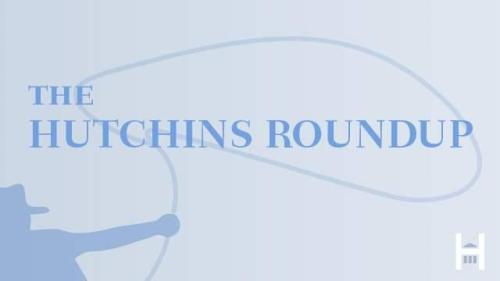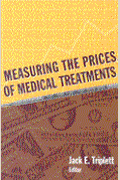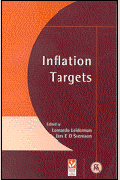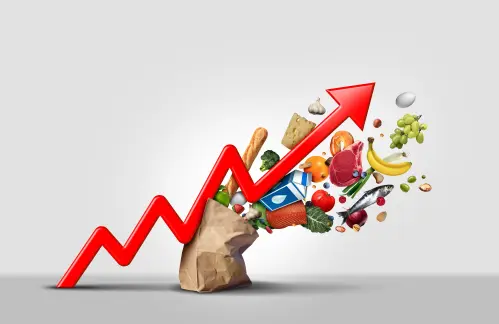Studies in this week’s Hutchins Roundup find that the distance between banks and borrowers expands in a credit boom, households base their inflation expectations on perceptions of past inflation, and more.
Want to receive the Hutchins Roundup as an email? Sign up here to get it in your inbox every Thursday.
Distance between lenders and borrowers expands with the credit cycle
Technological advances in the 1980s and 1990s enabled banks to more efficiently screen and monitor potential borrowers in distant locations, and the average distance between banks and borrowers has steadily increased over the last three decades. But long-distance lending may still be more risky than lending nearby, and some have proposed it may play a role in boom-and-bust credit cycles. Using data on small business loans from the Community Reinvestment Act, João Granja, Christian Leuz, and Raghuram Rajan at the University of Chicago find that the average distance between banks and lenders expands when credit conditions are loose and shortens considerably when they tighten. The average bank lending distance increased from 175 to 350 miles between 2004 and 2007, for example, but contracted to 200 miles after the 2008 financial crisis. The authors also find that longer-distance loans have higher default rates, suggesting that rapid increases in the average distance between banks and borrowers may indicate excessive risk-taking.
Households base inflation expectations on perceived past inflation
Households’ inflation expectations often deviate from those of professional forecasters and financial market participants, but it is unclear whether this is because households update their expectations more slowly or because they base their views on other, poorly understood economic fundamentals. Using data from the University of Michigan’s Surveys of Consumers, Sandor Axelrod of the University of Oxford and David Lebow and Ekaterina Peneva of the Federal Reserve Board show that households expect inflation to remain at about the same level at which they perceive it has been over the past 5 to 10 years. Households also tend to perceive past inflation to have been about 1 percentage point higher than it was in reality, and thus their expectations exceed those of financial markets and professional forecasters. These findings suggest that perceptions of past inflation are an important factor in current inflation dynamics and may have played a role in the sluggish return of inflation after the Great Recession.
Gubernatorial election uncertainty pushes manufacturing investment out of state
Uncertainty about economic conditions or future policy can lead businesses to delay investment. Nathan Falk and Cameron Shelton of Claremont McKenna College use data on U.S. gubernatorial elections from 1967 to 2004 to show that manufacturing investment in a state declines when uncertainty about future policies increases. Using a measure of uncertainty that depends on the degree of political polarization and the closeness of gubernatorial races, they show that a doubling of uncertainty leads to a 2.7 percent decline in manufacturing investment in the state during the election year. Furthermore, rather than simply delaying investment until after the election, firms relocate investment to nearby states. The authors show that each percentage point decline in investment in states undergoing competitive gubernatorial elections is matched by about a 1 percent increase in neighboring states where there is no election or the outcome is more certain.
Chart of the week: Homeownership continues a rebound that began only one year ago
Quote of the week
“A 2 percent target, or limit, was not in my textbooks years ago. I know of no theoretical justification. It’s difficult to be both a target and a limit at the same time. And a 2 percent inflation rate, successfully maintained, would mean the price level doubles in little more than a generation. I do know some practical facts. No price index can capture, down to a tenth or a quarter of a percent, the real change in consumer prices. The variety of goods and services, the shifts in demand, the subtle changes in pricing and quality are too complex to calculate precisely from month to month or year to year. Moreover, as an economy grows or slows, there is a tendency for prices to change, a little more up in periods of economic expansion, maybe a little down as the economy slows or recedes, but not sideways year after year,” writes Paul Volcker, former chairman of the Federal Reserve.
“I understand reasonable arguments can be made for 2 percent as an upper limit for ‘stability.’ There is a body of analysis that suggests official price indexes typically overstate increases by failing to account for improvements in the quality of goods and services over time. The point is also made that expectations and behavior are determined by the price of goods, where productivity gains and strong competition restrain price increases, rather than by the cost of services like education and medical care, where productivity gains are slow. But it is also true, and herein lies the danger, that such seemingly numerical precision suggests it is possible to fine-tune policy with more flexible targeting as conditions change.
“[…] The lesson, to me, is crystal clear. Deflation is a threat posed by a critical breakdown of the financial system. Slow growth and recurrent recessions without systemic financial disturbances, even the big recessions of 1975 and 1982, have not posed such a risk. The real danger comes from encouraging or inadvertently tolerating rising inflation and its close cousin of extreme speculation and risk taking, in effect standing by while bubbles and excesses threaten financial markets. Ironically, the ‘easy money,’ striving for a little inflation as a means of forestalling deflation, could, in the end, be what brings it about. That is the basic lesson for monetary policy.”










Commentary
Hutchins Roundup: Long-distance lending, household inflation expectations, and more
November 1, 2018